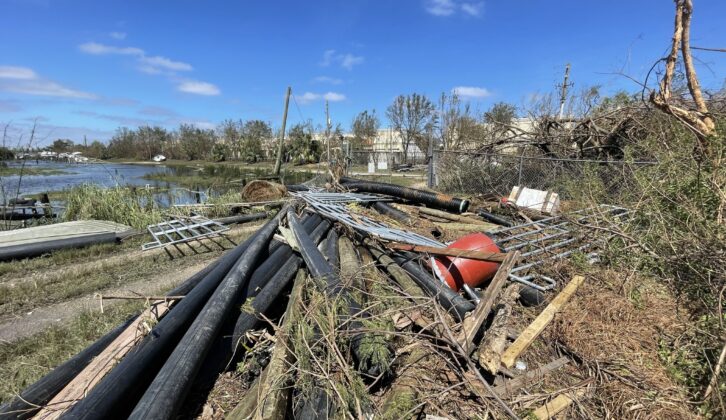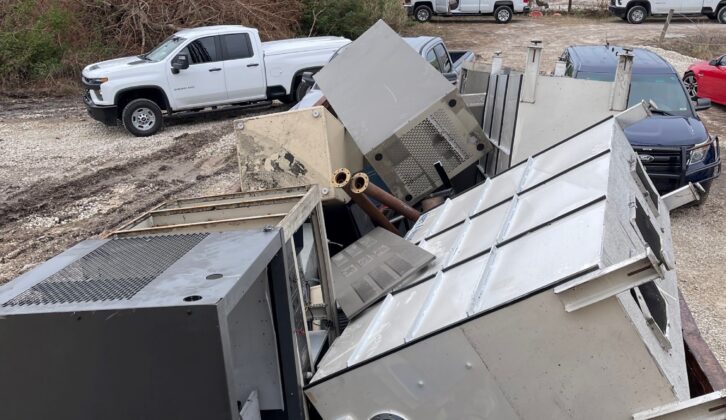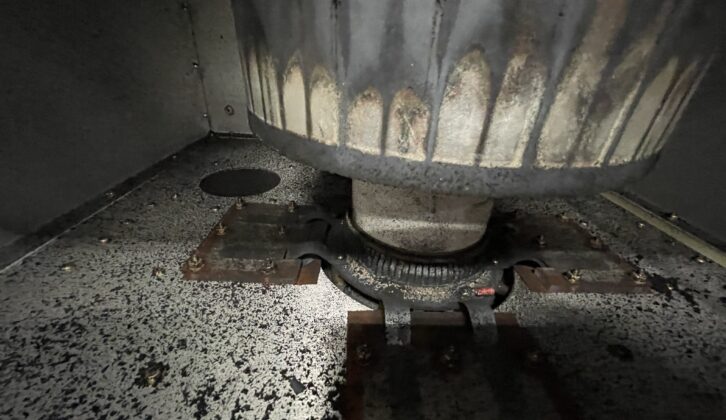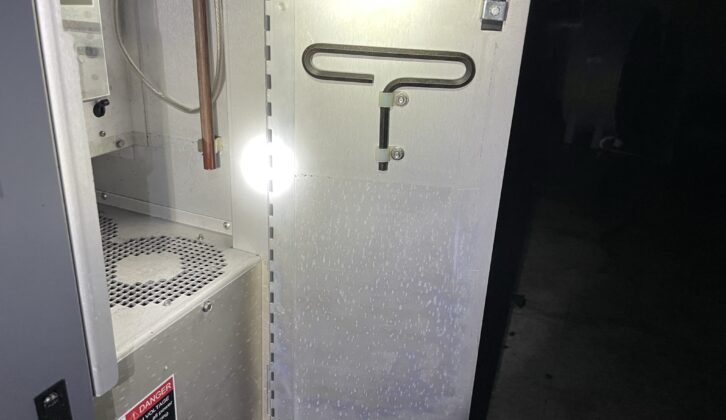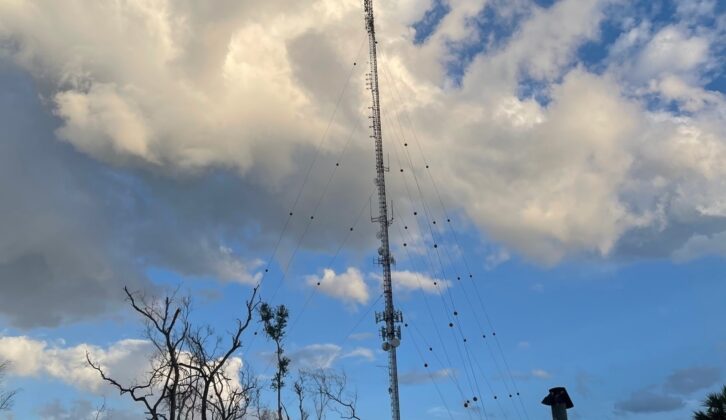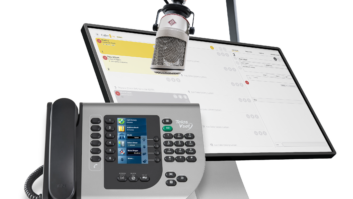A broadcast engineer hopes to go his or her entire career without having their transmission facilities wiped out by a disaster like a serious fire or a hurricane.
Jason Horvath and his colleagues had to deal with both types of crises six weeks apart.
Horvath is corporate chief engineer and IT director of Renda Broadcasting Corp., which owns WJGO(FM) “Bob FM 102.9.” It is a Class C1 station with 96 kW ERP licensed to Tice, Fla., and one of four FM stations with transmitters at a site owned by American Tower in Fort Myers.
WJGO shares an antenna combiner system there with Beasley Media stations WWCN and WJPT. The tower is also the home of Fort Myers Broadcasting station WTLQ(FM) and a translator for Relevant Radio.
On Aug. 18 of 2022, an electrical fire erupted in the transmitter building.
“It damaged everything,” said Horvath. “Due to the fact that all the equipment was energized and running, by the time the fire company got there, the fire had traversed up into the wall, into the ceiling area, through the conduits and burned the insulation off of everything.”
All RF equipment at the site essentially was totaled, including Renda’s transmitters, combiners and processors.
“The emergency personnel had to cut holes in the roof. There were two 20-ton air handlers that cycled everything, pulling all the smoke and soot through. And with the water and foam, it just destroyed everything.”
In the immediate aftermath, each broadcaster scrambled to get their stations back to something like normal operations. While Beasley switched to an auxiliary site a few miles inland, Renda was able to borrow an older Harris HPX20 transmitter from another one of its stations to get WJGO back on the air at half of its usual 48 kW TPO.
But that fill-in transmitter was also doomed. Because 41 days later a storm named Ian made landfall in the Fort Myers area as a Category 4 hurricane. Its 150 mph winds pushed water from the Gulf of Mexico across the low-lying landscape.
Click on the photo to toggle between pictures of the fire and flood damage.
[Related: “Gallery: One Very Unlucky American Tower Site in Florida“]
The transmitter site is less than a mile from the coast and about seven feet above sea level. The building was elevated another four feet off the ground. “But when you have a 16- or 18-foot storm surge,” Horvath said, “there’s nothing you can do.”
Dozens of radio and TV stations in the region were knocked off the air by Ian, and WJGO was among them, victimized by the flood water.
“There was no power. The building was blocked. There was debris everywhere. There was a barge blocking driveway access to the site,” Horvath said.
“And once that hurricane happened, doing any construction, getting anything done in a reasonable amount of time, getting supplies in that region was impossible.”
Radio World has told the story elsewhere about Beasley’s own efforts to restore electrical power to its four FMs, one AM and five translators after the hurricane. But as bad as Ian was, Beasley wasn’t affected by the flooding at this tower site because it had removed all of its damaged gear after the fire.
Not so Renda. WJGO stayed off the air for two weeks. Fuel supplies throughout the area were inconsistent. Broadcast sites and studios were difficult to access. Renda was eventually able to restore a 2 kW signal using a small temporary transmitter, and later went up to 10 kW with yet another loaner. But the station needed eight months to get back even to half-power.
“Every piece of equipment, from generator transfer switches to transmitters, was delayed at some point due to supply chain issues,” Horvath said. Insurance processes and the limited availability of work crews also stretched the timetable out. And although the tower survived the hurricane, the ERI Axiom antenna that serves the Renda and Beasley stations had taken such a shaking that it needed to be retuned.
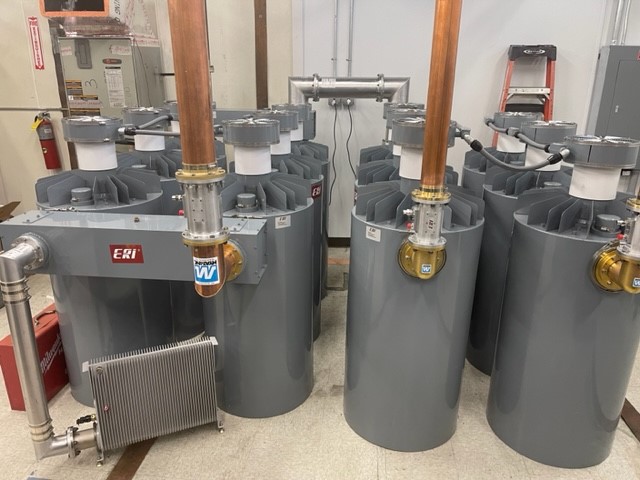
As of late 2023, all work now has been completed on a newly created iteration of the technical infrastructure that had existed before. The Renda and Beasley stations have a new three-station ERI combiner; Renda has put in a Nautel GV60 transmitter. One thing is for sure, says Horvath. “It’s hopefully a once-in-a-lifetime event.”
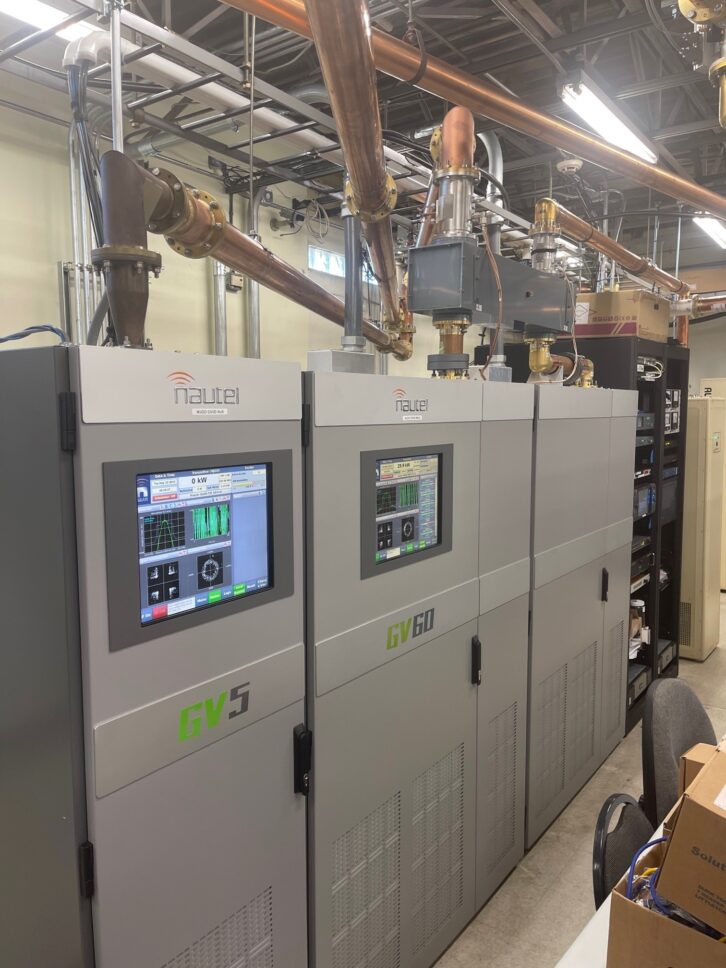
Radio World’s Elle Kehres contributed to this story.
Read more articles about notable RF projects in the free ebook “Great New RF Installs.”
